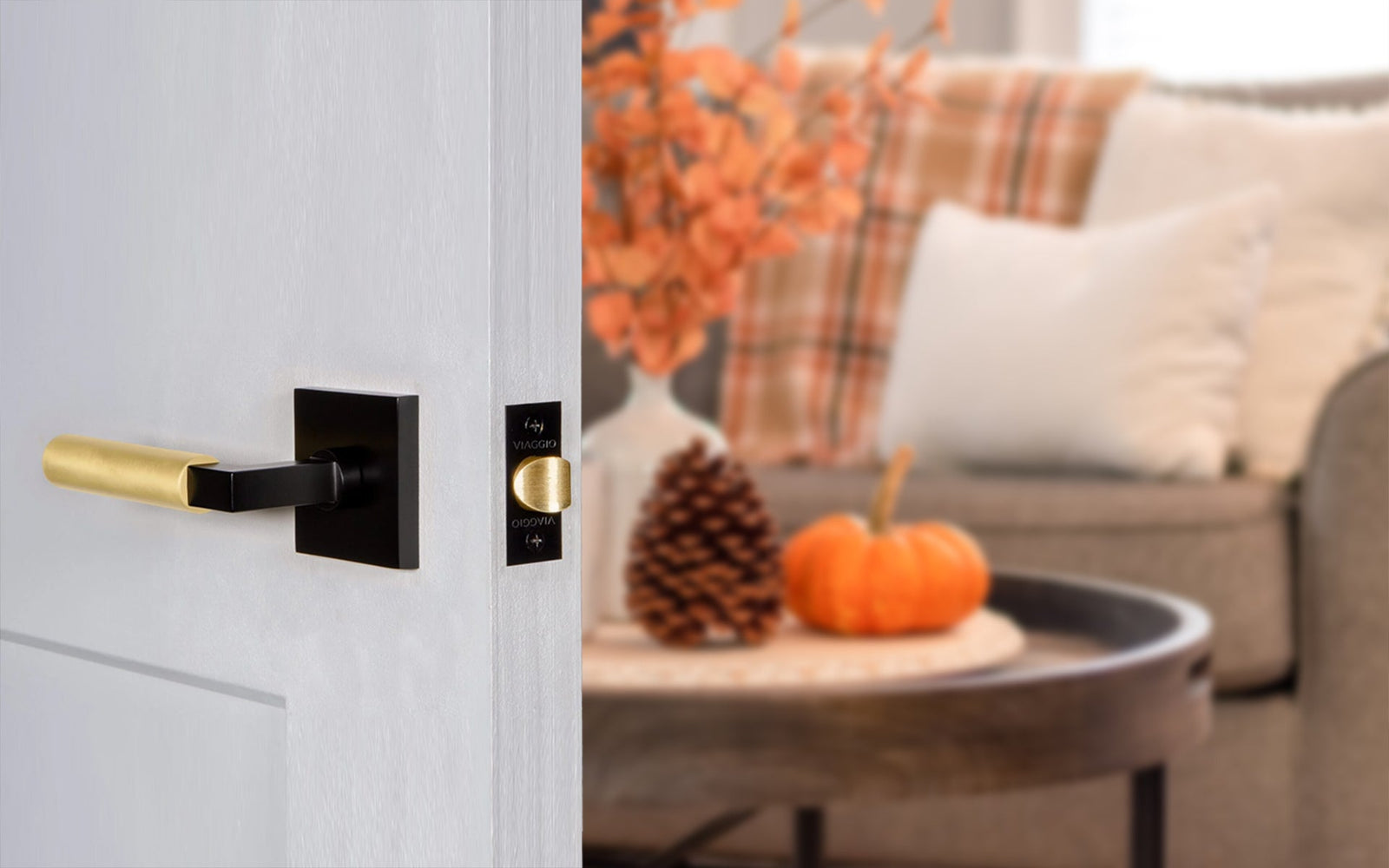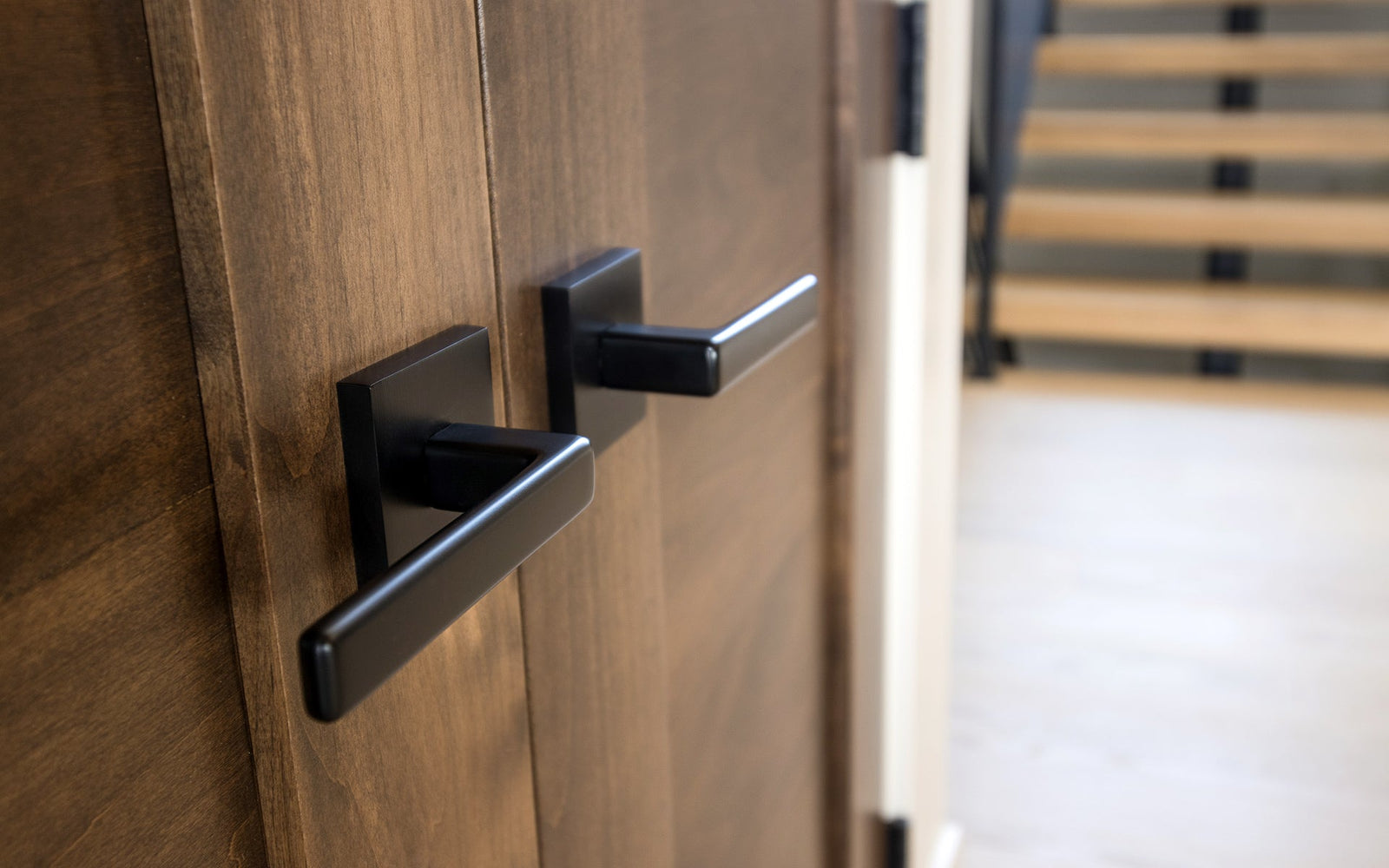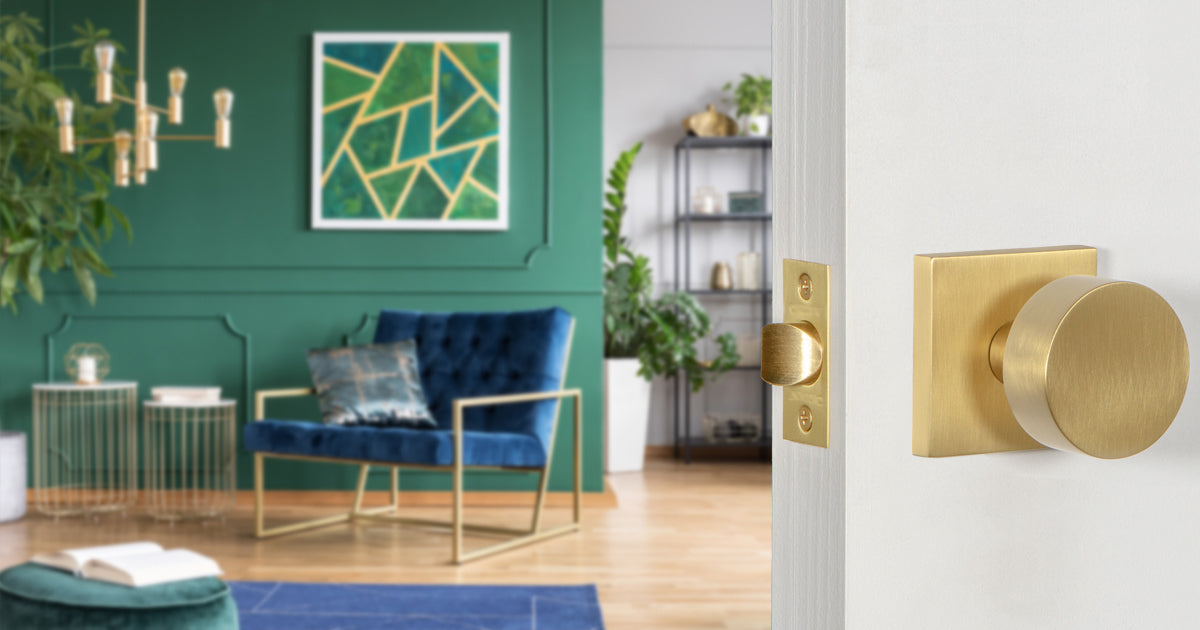
Good design isn’t just beautiful—it’s intentional. From how a room functions to the way materials flow from one space to the next, the most memorable homes are built on carefully considered details. And one of the most overlooked (yet deeply influential) details is door hardware.
Whether you’re building a new home, remodeling, or tackling a series of upgrades, hardware plays a bigger role in space planning than most people realize. The shape of a lever, the orientation of a door swing, or the finish of a hinge can all influence how a room looks, feels, and flows.
That’s why this month, we’re focusing on the connection between hardware and spatial design.
Why Hardware Belongs in Your Space Planning Process
Door hardware lives at the crossroads of design and function. It impacts not just how a door looks, but how it operates within the space around it.
Thoughtful hardware choices help ensure:
- doors open in the right direction,
- pathways remain comfortable and intuitive,
- finishes feel cohesive,
- and each room maintains the design integrity you worked so hard to create.
In other words, good hardware supports good space planning.
What to Decide and Track (and Why It Matters)
Below are the key details you’ll want to consider for each door in your project—along with how they shape the experience of moving through your home.
Room Name
Keeping track of which door belongs to each space prevents mix-ups during installation, especially in multi-room builds or renovations. Clear labeling keeps your planning organized and your project running smoothly.
Door Swing (Left or Right)
Door swing affects traffic flow, furniture placement, and how the room feels as you walk into it. It also determines lever orientation. A well-planned swing makes a space feel intuitive; a poorly planned one can cause awkward movement, blocked pathways, or furniture conflicts.
Function: Passage, Privacy, Entry, or Dummy
The function of the door dictates what type of hardware set you need:
- Privacy: Ideal for bathrooms and bedrooms.
- Passage: No locking—great for hallways and closets.
- Dummy, single or double: For shallow closets or double doors where no latch is needed.
- Entry: For exterior doors needing keyed access.
Choosing correctly ensures everyday convenience and eliminates costly reordering later.

Double Doors (Interior and Entry)
Double doors or French doors will need special consideration. For interior doors that need to latch in the middle, one side must be a double dummy, and the other should be a passage or privacy. For interior doors that do not need to latch, use either a single dummy or a double dummy on each door, depending on how you use the space. For entry French doors, Viaggio does not offer dummy entry hardware, so this requires more planning. Many people use a single dummy on the interior side of the non-functioning door, or a double dummy if you prefer hardware on both sides. However, if the non-functioning door is prepped (bore holes cut, swings open, etc), dummies will not work. This may require a call to your contractor or to our customer service team to determine the best way forward.
Latch Faceplate Style (Square or Radius Corner)
This is one of those small details that makes a big difference. Most latch faceplates come square. If your doors are prepped for radius (rounded) corners, you’ll need to request those specifically. A mismatched faceplate draws attention—just not in a good way.
Style or Collection Choice
The right design sets the tone. Whether you gravitate toward the clean, architectural lines of the Quadrato Collection or the soft, sculptural curves of Circolo, selecting a consistent style across your home keeps the aesthetic cohesive and intentional.
Finish
Finishes like Satin Brass, Bright Chrome, and Satin Black are among the strongest visual connectors in a home. Matching or thoughtfully mixing finishes allows your hardware to complement lighting, cabinetry, plumbing, and overall palette decisions.
Hinge Style (Square or Round Corner, and Finish)
Many hinges come with square corners, but radius or curved hinge corners are essential if your doors are routed that way. Matching hinge finishes to your hardware creates a unified, elevated look—especially on interior doors where the details are close at hand.

Small Hardware Choices, Big Spatial Impact
Hardware may seem like a finishing touch, but it shapes the way you experience your home every day. The right lever makes a door feel lighter. A quiet hinge makes a hallway more peaceful. A well-chosen finish helps tie one room to the next.
When all these elements work together, your home feels effortlessly functional—and beautifully cohesive.
Bringing Style and Function Together
Successful space planning isn’t just about where walls, doors, and furniture go—it’s about how each detail supports the way you move through your home. Door hardware plays a meaningful role in that flow, connecting rooms through consistent style, comfortable function, and intentional design.
Whether you’re refreshing a single space or planning an entire home, paying attention to hardware helps you create rooms that not only look polished but also feel intuitive and well-designed. With thoughtful selections and a clear vision, even the smallest details can transform your home into a space that works beautifully—and lives beautifully.



